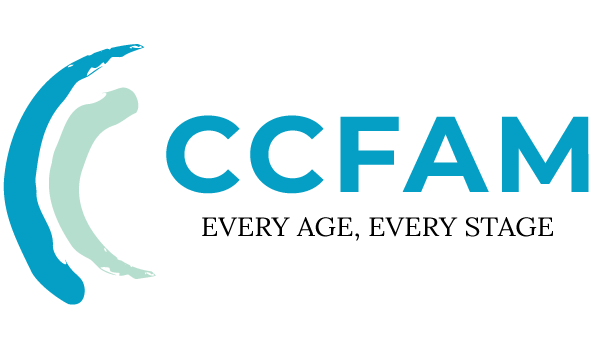25 Apr Signs Your Child May Need Counseling
As parents, we work hard to build children’s resilience, yet emotional or behavioral challenges can still arise. Recognizing when to seek counseling for children is essential for early intervention. This guide outlines DSM-5-aligned indicators that signal the need for child therapy and explains how evidence-based care supports healthy child mental health outcomes.
How Does Pediatric Mental Health Differ From Adult Psychological Needs?
Children’s brains and social-emotional skills are still developing, so they benefit from specialized approaches to therapy for kids. Unlike adult therapy, child-focused modalities such as play-based cognitive behavioral therapy (PCBT) and sand tray techniques allow kids to process emotions and experiences nonverbally. A 2023 study in the Journal of Clinical Child & Adolescent Psychology reported significant reductions in anxiety symptoms for children ages 4–12 receiving trauma-informed play therapy. The American Academy of Child & Adolescent Psychiatry notes that early intervention reduces the risk of more complex difficulties in adolescence and adulthood. For parent resources, see the American Academy of Child & Adolescent Psychiatry and the CDC’s Children’s Mental Health overview.
What Behavioral Red Flags Suggest Your Child Needs Professional Support?
The following clinically informed indicators may warrant counseling for children (especially if they persist for two or more weeks, escalate, or impair daily functioning):
- Emotional dysregulation: Frequent, intense meltdowns beyond typical developmental expectations (see benchmarks from the Yale Child Study Center).
- Social communication difficulties: Noticeable withdrawal from peers or avoidance of social interactions lasting more than two weeks (aligned with American Academy of Pediatrics guidance).
- Somatic symptoms: Recurrent stomachaches or headaches without a clear medical cause that coincide with stressors (see MedlinePlus on somatic symptoms).
- Executive function impairment: A marked drop in academic performance (for example, 30% or more) despite support, difficulty initiating tasks, or persistent disorganization (see the National Association of School Psychologists).
If your child expresses thoughts of self-harm, appears at imminent risk of harm, or you’re concerned about immediate safety, contact your local emergency services or call/text 988 for the U.S. Suicide & Crisis Lifeline. Learn more at 988lifeline.org.
Why Does Emotional Distress Manifest Differently Across Developmental Stages?
Emotional challenges often look different as children grow. Younger children may show internalizing behaviors (for example, thumb-sucking, regression, bedwetting), while adolescents may display more externalizing behaviors (such as oppositionality or risk-taking). The CDC reports that about 1 in 6 U.S. children ages 2–8 has a diagnosed mental or behavioral disorder. Early, developmentally appropriate child therapy supports brain development during periods of heightened neuroplasticity—helping strengthen adaptive neural pathways as the brain refines connections over time. For a science-based overview, see Harvard’s Center on the Developing Child.
What Therapeutic Modalities Are Most Effective for Children?
Evidence-based interventions commonly used in U.S. practice include:
- TF-CBT (Trauma-Focused Cognitive Behavioral Therapy): A structured, family-inclusive approach with strong outcomes for pediatric PTSD and trauma-related symptoms. Learn more at the TF-CBT Official Site.
- Parent-Child Interaction Therapy (PCIT): A gold standard for disruptive and oppositional behaviors that coaches caregivers in real time. See pcit.org.
- Neurosequential Model of Therapeutics (NMT): A developmentally sensitive framework that emphasizes regulation and safety as foundational for learning and connection. See the ChildTrauma Academy.
- Expressive Arts & Play-Based Therapies: Creative, nonverbal interventions that support emotion processing and communication, particularly helpful for children with ASD or selective mutism. Explore the Association for Play Therapy and the International Expressive Arts Therapy Association.
The best modality depends on your child’s age, developmental stage, goals, and family preferences, and usually includes active caregiver involvement.
How to Select a Qualified Child Therapist?
When seeking therapy for kids, consider these qualifications and indicators of quality care:
- Licensure in your state (e.g., LCSW, LMFT, LPC, Psychologist) and, when relevant, a Registered Play Therapist (RPT) credential.
- Training in DC:0–5™ for early childhood assessment and diagnosis .
- Affiliation with reputable professional bodies such as the American Counseling Association, the Association for Play Therapy, or the American Psychological Association.
- Experience collaborating with pediatricians, schools, and multidisciplinary teams when needed.
What Questions Should Parents Ask Potential Therapists?
- “What developmentally appropriate assessment tools do you use (for example, the BASC-3)?” Learn more about the BASC-3 from Pearson.
- “How do you integrate family systems or parent coaching into sessions?”
- “How will we measure progress, and how often will we review goals?”
FAQs: Evidence-Based Insights on Child Counseling
At what age should children start therapy?
Intervention can begin as early as infancy for attachment concerns, often through dyadic models like Child-Parent Psychotherapy (CPP). See Zero to Three for early childhood mental health resources.
How long does meaningful progress take?
Timeframes vary, but neuroscience-informed approaches often show measurable progress over 12–24 weekly sessions, depending on goals, family participation, and the child’s needs. For context on brain development and learning, visit Harvard’s Center on the Developing Child.
Does insurance cover child therapy?
Under the Mental Health Parity and Addiction Equity Act (MHPAEA), most U.S. insurers must offer mental health benefits comparable to medical/surgical benefits. Confirm specifics (deductible, co-pays, session limits) with your insurer or employer plan. For an overview, see the CMS MHPAEA fact sheet.
Conclusion: Building Resilient Futures Through Early Intervention
Recognizing the need for child therapy reflects proactive mental health stewardship. By choosing developmentally tailored interventions and qualified specialists—and collaborating with schools and pediatric providers—parents can turn challenges into growth opportunities and support lasting well-being. For additional guidance, explore the American Psychological Association’s child mental health resources and NAMI’s guides for kids, teens, and young adults.



Sorry, the comment form is closed at this time.